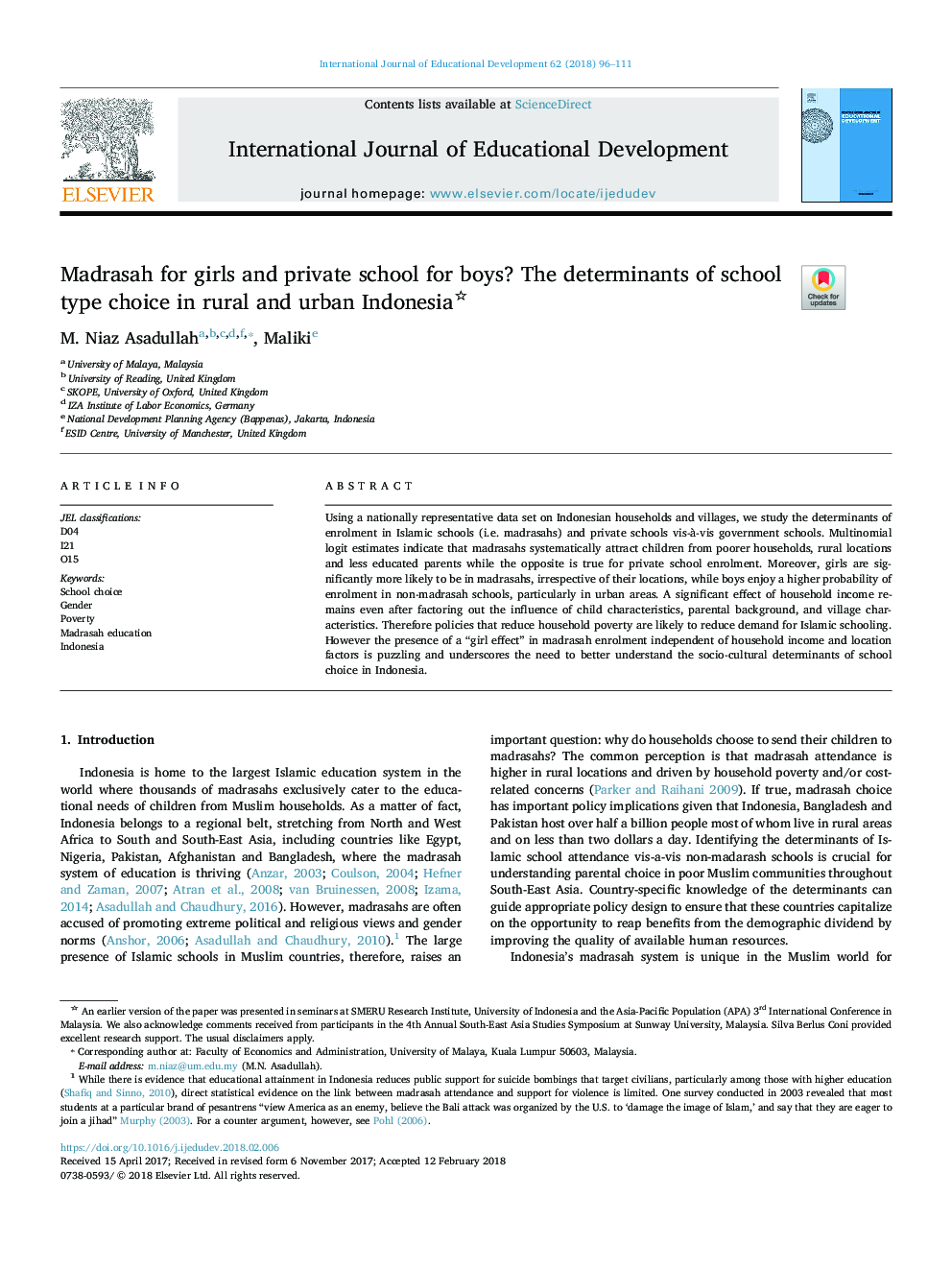| Article ID | Journal | Published Year | Pages | File Type |
|---|---|---|---|---|
| 6841068 | International Journal of Educational Development | 2018 | 16 Pages |
Abstract
Using a nationally representative data set on Indonesian households and villages, we study the determinants of enrolment in Islamic schools (i.e. madrasahs) and private schools vis-Ã -vis government schools. Multinomial logit estimates indicate that madrasahs systematically attract children from poorer households, rural locations and less educated parents while the opposite is true for private school enrolment. Moreover, girls are significantly more likely to be in madrasahs, irrespective of their locations, while boys enjoy a higher probability of enrolment in non-madrasah schools, particularly in urban areas. A significant effect of household income remains even after factoring out the influence of child characteristics, parental background, and village characteristics. Therefore policies that reduce household poverty are likely to reduce demand for Islamic schooling. However the presence of a “girl effect” in madrasah enrolment independent of household income and location factors is puzzling and underscores the need to better understand the socio-cultural determinants of school choice in Indonesia.
Related Topics
Social Sciences and Humanities
Social Sciences
Development
Authors
M. Niaz Asadullah, Maliki Maliki,
